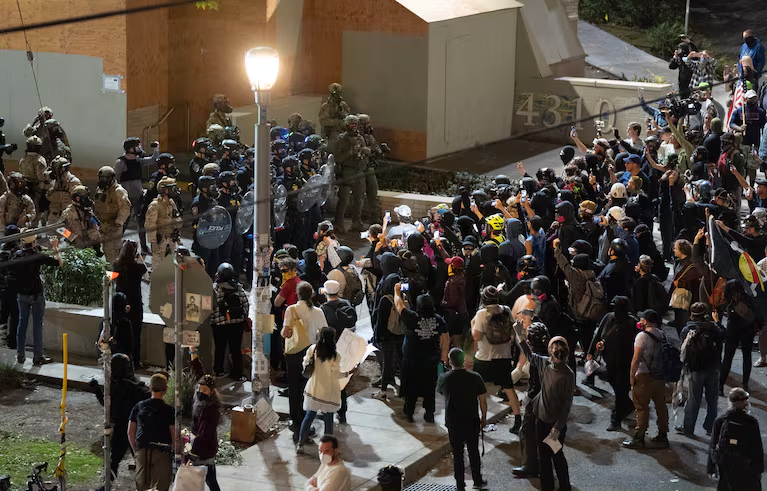PORTLAND, Ore. — Newly released documents reveal the Trump administration gave Oregon Gov. Tina Kotek just 12 hours to deploy National Guard troops in Portland or face federal intervention. The ultimatum set off a tense back-and-forth between state and federal leaders, ultimately leading to the nationalization of 200 Oregon National Guard members.
The 12-Hour Ultimatum
The deadline was issued in a memo from Maj. Gen. Timothy Rieger of the National Guard Bureau, signed shortly before 11:30 a.m. Pacific Time on Saturday.
“If [Oregon National Guard] forces are not mobilized in the next 12 hours, the Secretary of War may direct the mobilization of as many members of the ORNG as he may deem necessary,” Rieger wrote.
Also Read
He added that “time is of the essence” and failure to act could “risk lives and property damage.”
Kotek Pushes Back
Gov. Kotek immediately engaged in calls with federal officials, including Homeland Security Secretary Kristi Noem and later President Donald Trump himself. According to Kotek, she made clear she did not believe troops were necessary to respond to the small but persistent protests outside Portland’s U.S. Immigration and Customs Enforcement (ICE) facility.
By Saturday evening, the Oregon National Guard formally responded to the deadline. Brig. Gen. Alan Gronewold, director of the Oregon Military Department, told federal officials that Kotek “does not agree to Title 32 mobilization.”
Federal Action Moves Forward
Despite Kotek’s refusal, the Trump administration followed through on its threat the next morning, ordering 200 Oregon National Guard members into federal service for a 60-day period.
Kotek later said Trump broke a promise to consult her before the mobilization and texted one of the president’s aides in frustration.
DHS Justifies Troop Deployment
In a memo dated the day before the ultimatum, the Department of Homeland Security claimed that violent groups were “coordinated” in obstructing law enforcement in Portland. It alleged protesters were aligned with designated domestic terrorist organizations — a reference to Trump’s controversial order labeling Antifa a terrorist group.
The DHS outlined that guard members would be tasked with protecting federal facilities, managing access control, and assisting in crowd control. The deployment was requested to last as long as “unrest” continued.
Deployment Still in Limbo
As of Tuesday, the Oregon National Guard said the 200 mobilized members were undergoing processing and training before any arrival in Portland. Legal challenges could still delay or block the deployment entirely.
Local law enforcement, including the Portland Police Bureau, has reiterated that they do not need federal military assistance to manage the protests, which have generally involved only a few dozen demonstrators.
Trump’s Public Pressure Campaign
President Trump has repeatedly highlighted Portland’s protests on his Truth Social platform. On Wednesday, he declared that “conditions continue to deteriorate into lawless mayhem” and that guard troops were “in place.”
He also criticized Gov. Kotek, writing: “The Governor of Oregon must be living in a ‘Dream World.’ Portland is a NEVER-ENDING DISASTER. Many people have been badly hurt, and even killed. It is run like a Third World Country.”
Growing Costs of Deployment
Financial estimates of the mission vary widely. The Oregon Military Department projected $3.8 million in soldier salaries alone. Kotek’s office, however, placed the full cost closer to $10 million once housing, food, and supplies are included.
Officials have not released a final cost breakdown.
Portland on Edge
The documents, released Wednesday in response to a public records request, provide the clearest look yet at how quickly the deployment escalated from a demand to federal action.
For now, Portland remains in limbo — with 200 National Guard members called up but not yet deployed, and a community watching closely as legal, financial, and political battles play out.












